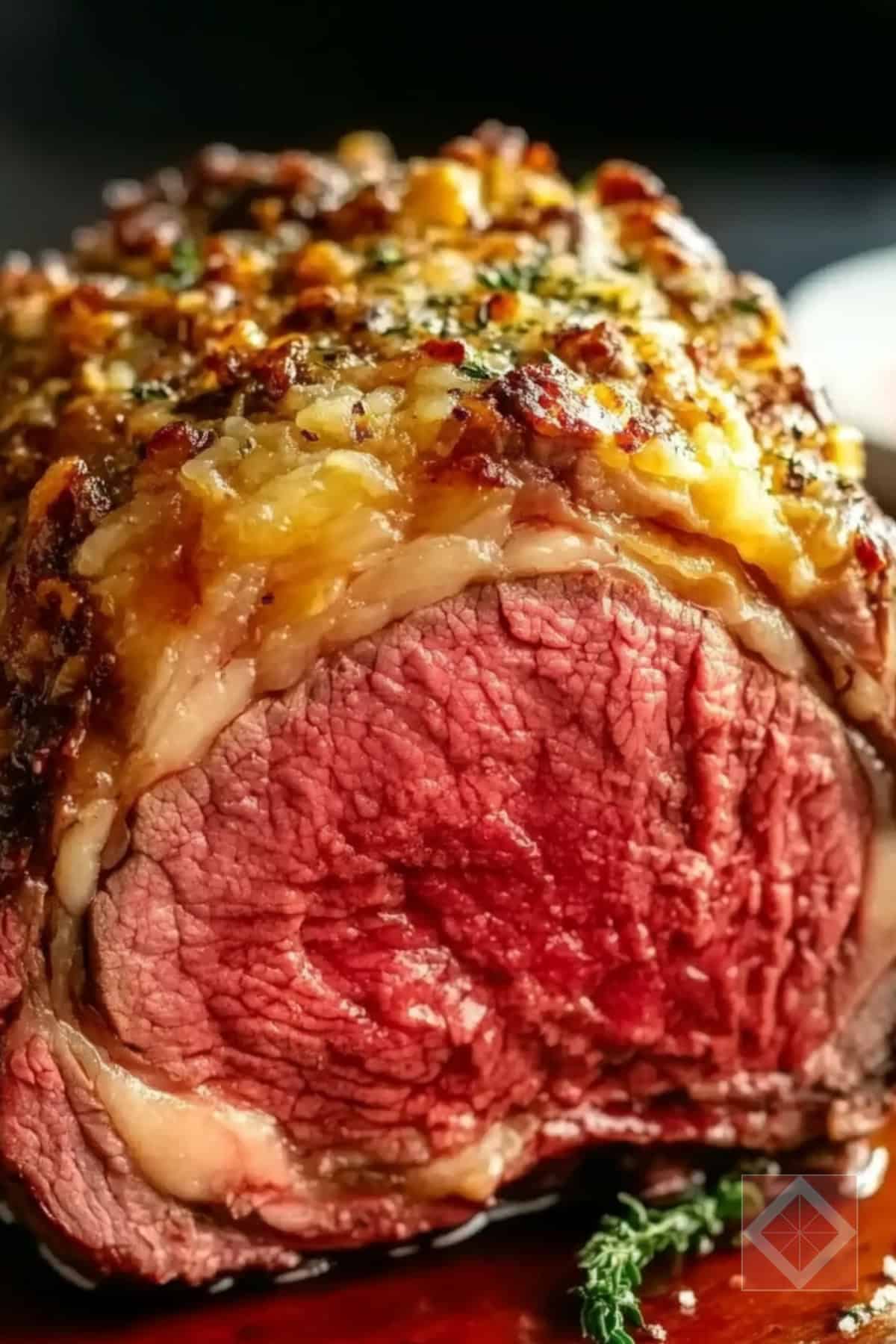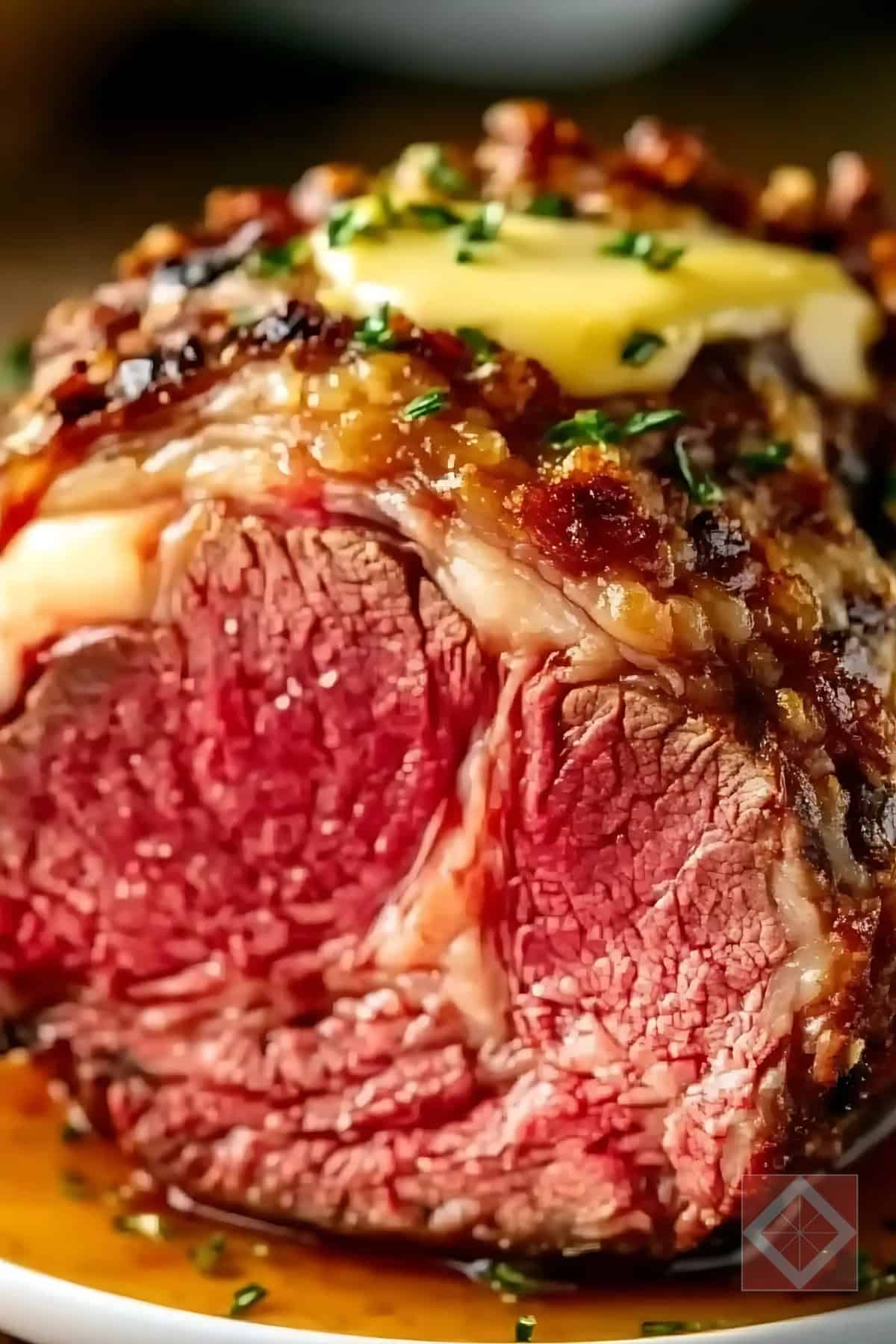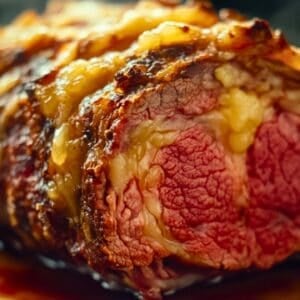A perfectly cooked prime rib roast with a crispy crust and rich buttery flavor is a must-have for anyone following the carnivore diet. This air fryer method delivers a juicy and tender cut of beef in 30 minutes.
With minimal ingredients and a simple cooking process, this recipe is a fantastic way to enjoy a restaurant-quality steak at home.
Whether you’re new to the carnivore diet or a seasoned follower, this dish is an excellent high-protein, zero-carb meal that fits your lifestyle perfectly.
Best Cut and Equipment Size for Air Fryer Cooking

Selecting the right cut and equipment ensures optimal results.
- Best Cut: Prime rib is a well-marbled, flavorful cut, making it ideal for a high-fat diet. If unavailable, ribeye is another excellent choice.
- Air Fryer Size: A 5-quart or larger air fryer is best for a 1-lb prime rib roast. If you have a smaller air fryer, cut the roast into smaller portions for even cooking.
- Cooking Basket vs. Rack: Using a rack allows air circulation around the meat, ensuring a crispy outer layer while keeping the inside tender and juicy.
Flavor Variations for a Personalized Touch
While a strict carnivore diet focuses on meat and animal-based fats, you can slightly modify this recipe for variety.
- Garlic Butter Prime Rib: Add minced garlic to the butter before basting for a more aromatic, savory bite.
- Cheesy Crust Prime Rib: Sprinkle shredded cheese over the top in the last two minutes of cooking for a crispy, cheesy crust.
- Bone-In vs. Boneless: Both work well, but bone-in cuts may require slightly longer cooking times.
- Seasoning Options: While salt is the primary seasoning, some may choose to add pepper or smoked salt for extra depth.
Tips for the Best Air Fryer Prime Rib
To ensure your prime rib turns out perfectly every time, follow these key tips:
- Preheat the Air Fryer: Always start with a hot air fryer to ensure a good sear.
- Use High-Quality Butter or Tallow: Clarified butter or beef tallow enhances the meaty richness.
- Let It Rest: Allow the meat to rest for at least 5 minutes after cooking to redistribute juices and maintain tenderness.
- Adjust for Doneness: Medium-rare is around 130°F; adjust the time accordingly for a rarer or more well-done steak.
- Flip Halfway Through: Ensures even cooking and a crisp exterior on all sides.
Pairing & Serving Suggestions

Although the carnivore diet focuses on meat, here are a few ways to serve and enhance this dish:
- Classic Pairing: Enjoy it with additional melted butter or a drizzle of beef tallow for extra richness.
- Carnivore-Friendly Side: Serve with a side of air-fried bacon or a slice of cheese for an indulgent, satisfying meal.
- Leftover Ideas: Slice the roast into thin pieces for steak and eggs in the morning, or use the meat for a beef-filled omelet.
- Beverage Pairings: Bone broth or a warm cup of butter coffee makes a great complement.
With a crispy, buttery crust and tender, juicy interior, this recipe is the ultimate high-protein, low-carb indulgence.

Butter-Basted Prime Rib Roast Air Fryer Recipe
Equipment
- 4-quart or larger air fryer
Ingredients
- 1 lb prime rib roast
- 3 tbsp clarified butter or tallow
- Salt to taste
Instructions
- Preheat the air fryer to 375°F.
- Season the prime rib: Generously coat the roast with 2 tablespoons of melted clarified butter or tallow, then sprinkle with salt.
- Cook the prime rib: Place the roast in the air fryer basket and cook for 20-25 minutes, flipping halfway through. Cook until the internal temperature reaches 130°F for medium-rare, or adjust to your preferred doneness.
- Baste with butter: During the last 5 minutes of cooking, baste the roast with the remaining tablespoon of butter or tallow for extra richness.
- Rest and serve: Remove from the air fryer and let the roast rest for 5 minutes before slicing. Serve hot.
Notes
- Garlic Butter Prime Rib: Add minced garlic to the butter before basting for a garlicky flavor.
- Cheesy Prime Rib: Sprinkle shredded cheese on top in the last 2 minutes of cooking for a cheesy crust.
Nutrition
Davin is a jack-of-all-trades but has professional training and experience in various home and garden subjects. He leans on other experts when needed and edits and fact-checks all articles.

